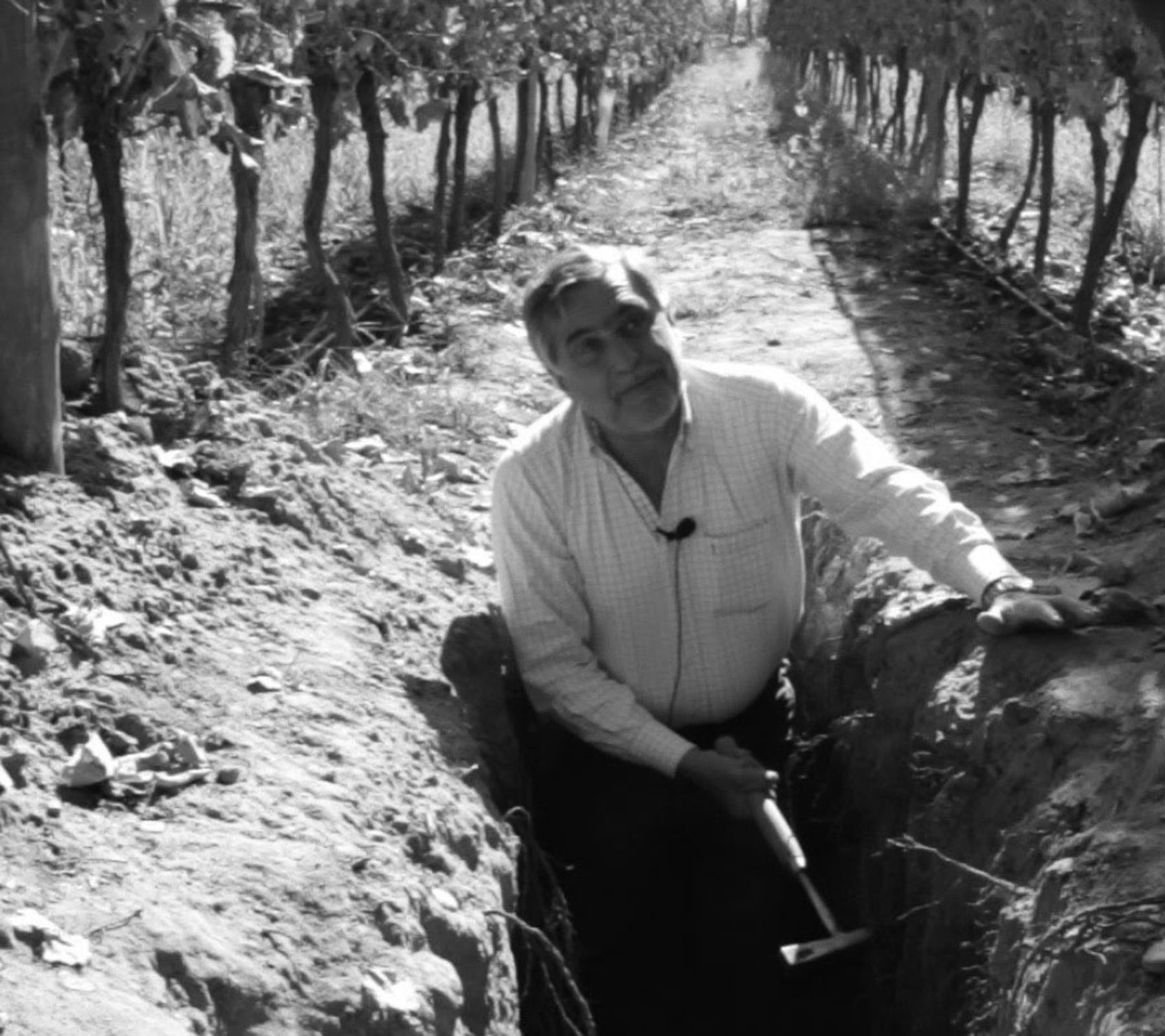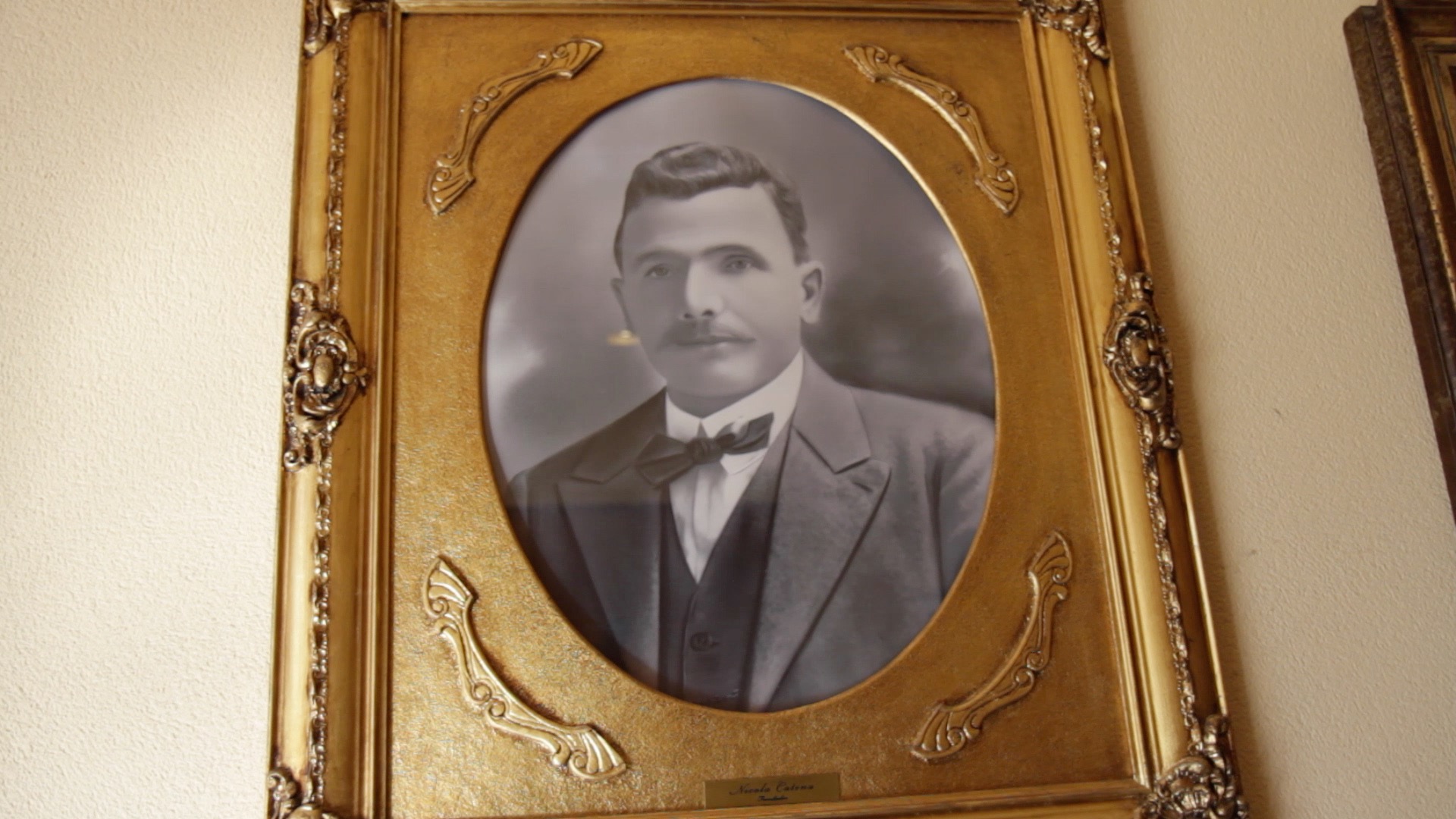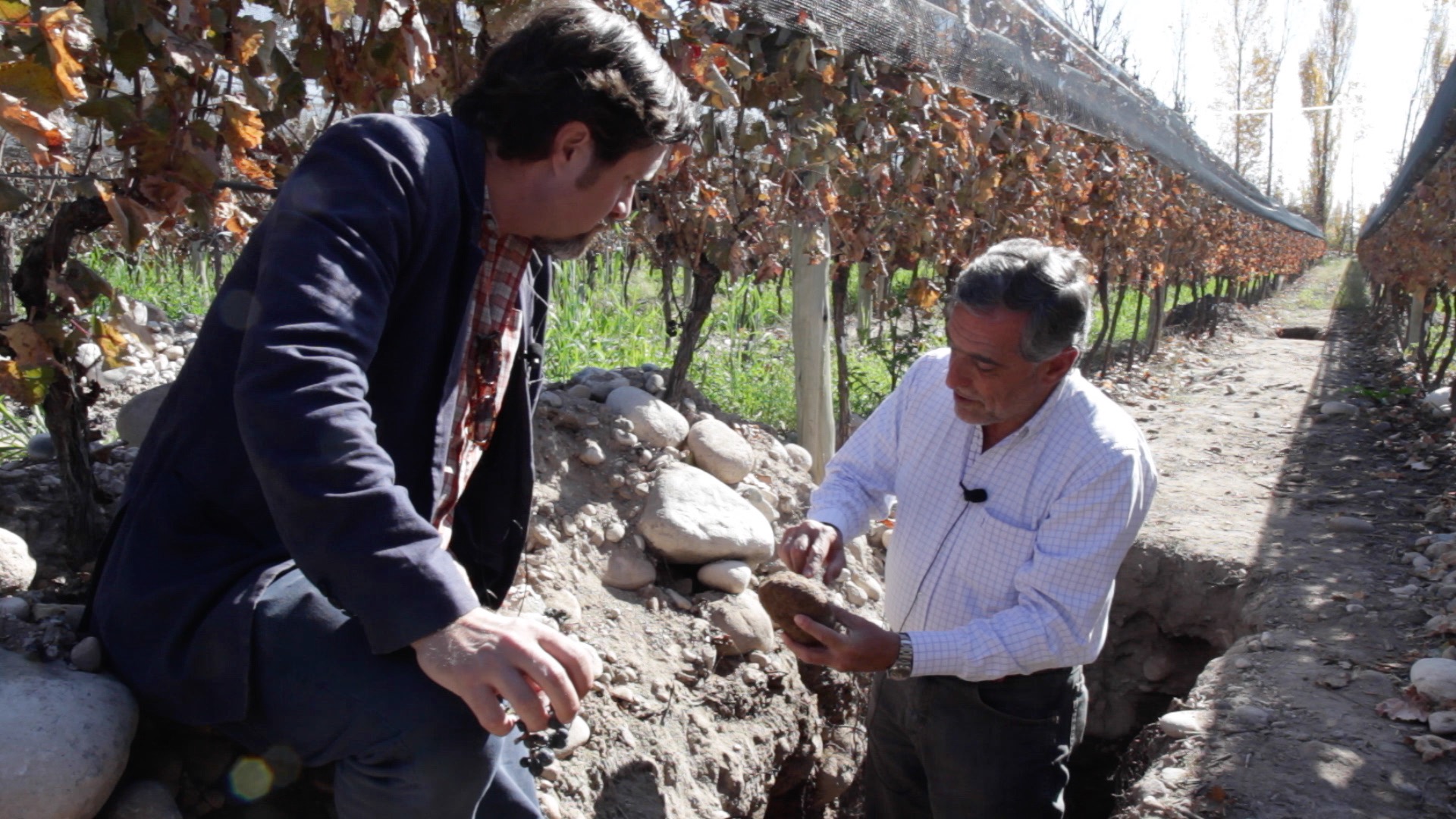
Driving down a dirt road in Luyan de Cuyo, Mendoza, an hour and a half late for our appointment, I'm still making sense of the traffic ticket I just received. Additionally, there is no signage for the wine estate we are visiting. Nor cell phone service. And the car is without GPS. The dry creek bed we are about to cross has boulders as big as soccer balls; we wince as they clang against the bottom of the car. Difficult to believe we are on our way to visit one of Argentina’s most talked-about new wineries
To those accustomed to vino-tourism in the United States, Argentina is a radically different experience—to quote Seinfeld, it’s “an enigma, a mystery wrapped in a riddle.”
In fact, Mendoza is the anti-Napa. There are no limos teeming with bachelorettes floundering among these dirt roads and dry creek beds of Mendoza. Frontier-like, there is a grit about the place. It is also full of contradictions: it is at once both a very new wine region as well as a very old wine region
The History
Argentina has been making wine for centuries and has long been one of the highest per capita consumers of wine in the world. Yet it wasn't until the mid-eighties that it became an international wine sales powerhouse—almost out of nowhere—with Malbec as the star.
To better understand the country's history in wine, a story that began in the sixteenth century, it is necessary to first understand the people who make up the nation.
In 1561, Spanish conquistadors trekked from Chile over the Andes into Argentina, bringing with them wine grapes. But the grapes alone were not enough. They needed an irrigation network, one they would borrow from the indigenous Huarpe. And with that, the conquistadors began making wine.
The Spanish crown, however, was not keen to encourage the evolution of the industry, as its goal was to export Spanish wine to the colonies. As with the irrigation network, the conquistadors made do with what was accessible. The original grapes that were planted in Argentina were Pais grapes, a variety indigenous to the Canary Islands of Spain. Later in the 1850s, the Mendoza government brought over a French viticulturist—the viticulturist responsible for bringing over the now pervasive and popular Bordeaux varietals, including Malbec.
Despite the growth of the local industry, the colonies continued to face challenges, most pressing being the challenge of transporting wines from Mendoza to Buenos Aires. As a result, local wine played second fiddle to cheaper and higher-quality imported wines from France.

But not for long. The creation of the Mendoza-to-Buenos Aires railway in 1885 provided a real spark, one that ignited the Argentine wine industry. And that spark was once again lit by immigrants, mostly of Italian descent who used the railway to settle in Mendoza. As with the Spaniards before them, these immigrants brought with them Old World winemaking skills. They also carried the understanding and will to expand the irrigation network. Above all, they introduced a new population of wine drinkers—their fellow immigrants. At one point, the per capita consumption in Argentina was as high as 90 liters per capita, which compared to the United States' 10 liters per capita is extremely high. It should be noted, however, that the overall improvement of "native" Argentine wines wasn't without aid: the vine destroying aphid phylloxera decimated 40% of French vines between the 1850s and 1870s. This put a dent in French imports and allowed the local industry an opportunity to showcase its wines.
The modern history of the Argentinian wine industry is heavily influenced by the boom and bust nature of local politics. Key players were Hector and José Greco, brothers who built a wine empire that at its height in the 1970s controlled nearly half of the Argentine wine market. The Grecos, an immigrant family, began in the wine business in Argentina in the late 1940s. Gradually, they took over many of the other larger immigrant family wine businesses, and in 1979 they bought Argentina’s largest winery, Grupo Catena, from family head Nicolás Catena. But their luck soon ran out. In 1980, a banking collapse caused a run on banks and resulted in the Grecos defaulting on their loans. As a result, the entire Argentine wine industry was almost wiped out.
Fortunately for the future of the Argentine wine industry, Nicolás Catena came out of the crisis relatively unscathed, and he was able to take back his company from the Grecos.
Catena and the Rise of Malbec
A central character in the rise of Argentine Malbec, Nicolás Catena is described by Evan Goldstein in his book Wines of South America as “the undisputed patriarch of Argentinean fine wine.” In 1965 he inherited a family winery that was started by his grandfather Nicola (above right) in 1902. A trained economist, he was a visiting professor at Berkeley in the early 1980s when he encountered Robert Mondavi and the California push that took on the French which ultimately led to the famous victory at the Judgment of Paris in 1976. Catena came to understand and appreciate inconsistencies in the quality of winemaking, and how Argentina needed to improve its equipment, viticulture, and winemaking skills. In an interview with Decanter Magazine in 2009 he spoke to the experience: “We visited Robert Mondavi and tasting his wines was a shock. I loved the fruit and freshness of the Fumé Blanc, and the Cabernet Sauvignon, although young, was so full of fruit, aroma and flavour. It was a revelation.”
As one of the few winemakers who had capital after the banking collapse, Catena invested in improving his wine operation. He hired American winemaker Paul Hobbs to consult and assist in his vision for quality. In an interview with Grape Collective’s Dorothy J. Gaiter, Hobbs talked about the early days with Catena and how he discovered the great potential of Malbec. Hobbs explained that Catena originally wanted to focus on Chardonnay and Cabernet and had little regard for Malbec.
“Nicolás Catena had an old vineyard, a 100-year-old vineyard in a little area called Lunlunta along the Rio Mendoza River," he said. "I asked Nicolás if he would help finance some experimental trials with the grape. [Nicolás initially] said, 'No, the French have already demonstrated. They did not replant after phylloxera. They have already demonstrated as well, documented in the literature about this grape, so we're not going to invest in Malbec.' Nevertheless, his head viticulturist humored me and we began working on a section of the vineyard to grow the grapes in a way that I needed them grown.”
"That old vineyard inspired me and so even against Nicolás’ wishes I proceeded."

Photo: José Alberto Zuccardi with the author in the Uco Valley
The wines Hobbs made from that old vine Malbec garnered strong scores with the US—and thus the rise in Malbec began, Catena at the forefront of the export boom.
What defines the Malbec success also touches on the ability to produce value-priced wines coupled with undeniably smart marketing. Trapiche is able to produce a sub-$8 Malbec that provides hard-to-beat value at that price point. Likewise, in 1999, Susana Balbo built (from scratch) a wine business with her Crios and Ben Marco brands, employing a similarly aggressive business model. The theme? The wines are solid, easy to drink, and consistently good value.
Catena, headed by winemaker Jose´ Gallante, was influential in the move to high altitude farming, which defines quality Malbec today and led to a new generation of Argentine wine innovators. His 1993 planting of the Adrianna vineyard in Gualtallary in the Uco Valley, 4757 feet above sea level was prescient.

The Zorzal winery in Gualtallary
The Evolution to a “Modern” Balanced Malbec
When one visits a European country, there is often debate between modern and traditional winemaking. “Modern” is used to describe a more fruit-forward high alcohol style that appeals to an international palate. In Argentina, the opposite is the case: “traditional” refers to the big, bold, fruity, high alcohol Malbec’s that originally grabbed the attention of the American consumers and critics; “modern” refers to a more balanced, restrained style of winemaking with lower alcohol levels. The Uco Valley is where this so-called modern trend is taking off, with Zorzal at the forefront of this new movement and the Michelinis representing the new frontiersmen.
The Michelinis launched their winery in a barren, isolated part of the Uco Valley called Gualtallary. Giving up jobs, they set out to start a crazy project in a crazy place with the idea of building something unique and special. And they have succeeded. Their wines have layers of complexity absent in many of the more traditional Malbecs. They ferment their wines in concrete amphorae similar to those used in ancient times. The amphorae have been so successful that many of the Uco Valley winemakers have taken their lead, and now also use the vessels. Instead of importing the costly vessels from France, the Michelinis worked alongside a local fabricator to build them. Gerardo Michelini joked that he should have put a patent on the casks, as the fabricator now has a tremendous business building them for other winemakers.
It is not just the small guys who are embracing the new style. José Alberto Zuccardi, owner of one of the largest wineries by volume in Argentina, has invested tremendous resources to build a winery in the Uco Valley, dedicated to making “modern” terroir -driven wines. In contrast to the Michelinis, he is using his considerable resources to invest in scientific studies, including complex soil mapping. They harvest and separate grapes based on soil type zones, rather than the traditional method of pulling vines from distinct vine rows.
Argentina has a number of challenges as a wine industry. First, there is its reliance on a single varietal and the risk of it falling out of fashion as Shiraz did in Australia. There are also the hurdles of the boom bust economic cycles in the country. Winemakers are faced with an asset wine that requires aging amidst tremendous inflation and the obstacles of dealing with an artificially inflated currency.
Mendoza is a complex region. It has a long history of winemaking and yet is a very modern creation. It is a story of international winemaking, strong marketing, and big success stories. The new wave of “modern” Mendoza winemakers are making bold, complex wines. As pioneering winemaker José Gallante told Grape Collective about the potential of the Uco Valley and “modern” Argentine wines: “For me, it's exciting to think of the future and what will happen with this grape when it is 20, 30 years old. Maybe the quality will be amazing because now the young plants produce a very nice quality of grape, imagine what could happen in 10, 15 years ahead. In the future, I think this area could be fantastic.”
Travel
Mendoza is a terrific destination for those with a sense of adventure. Travel is not easy. The simplest way to get to Mendoza is to fly into Santiago, Chile and either fly over the Andes, take a bus, or rent a car.
We elected to take a bus yet ran into problems when LAN, the main Chilean airline, didn’t send our luggage on our flight; we ended up missing our transport. LAN has a 30-minute flight to Mendoza, but it cost nearly as much as the ticket from New York. Despite losing our luggage, we were not offered a discount on the ticket.
Renting a car is also a challenge. It takes four days to process the insurance certificate required to cross the border into Argentina—so if you want to rent, it is wise to plan ahead. The night bus that we were forced to take is a rough ride. The drive itself is about four bumpy hours, and you are forced to stop and go through customs, which can take up to an additional two hours. During the day, the scenery through the Andes is a very pleasant, inspiring experience.
The other challenge with Mendoza is dealing with the government-regulated exchange rate. While at the hotel we were advised that if we went to the black market exchange, our hotel would cost 20% less. It is a strange experience loitering in front of a McDonald’s then locating our black market money dealer and going down some stairs into a closed shop, and sitting down to count and exchange large stacks of money. It felt like a drug deal, and a very odd way to pay for a room at a large internationally known hotel.
Books on Argentine wine
Laura Catena's Vino Argentino
Ian Mount's The Vineyard at the End of the World














